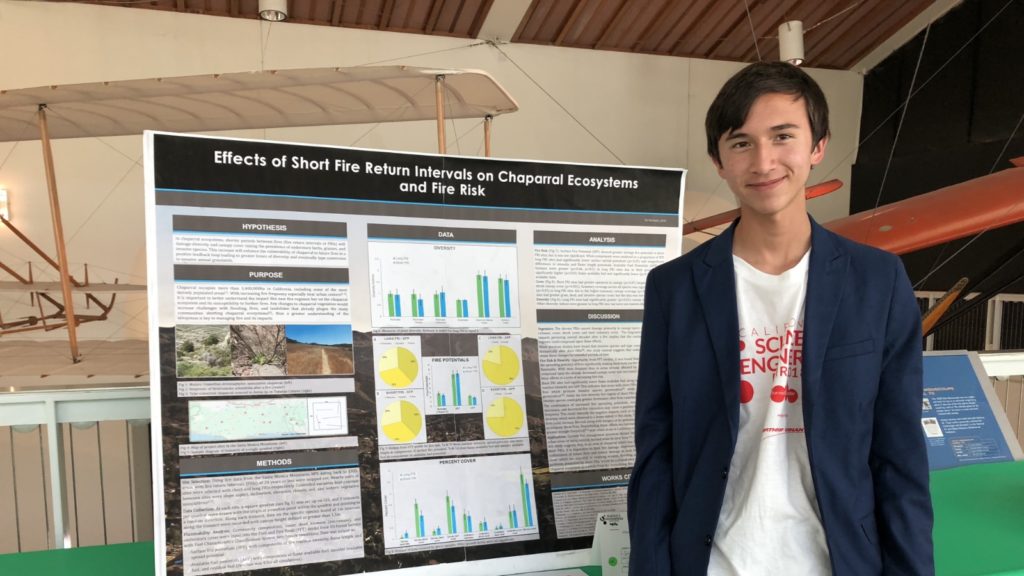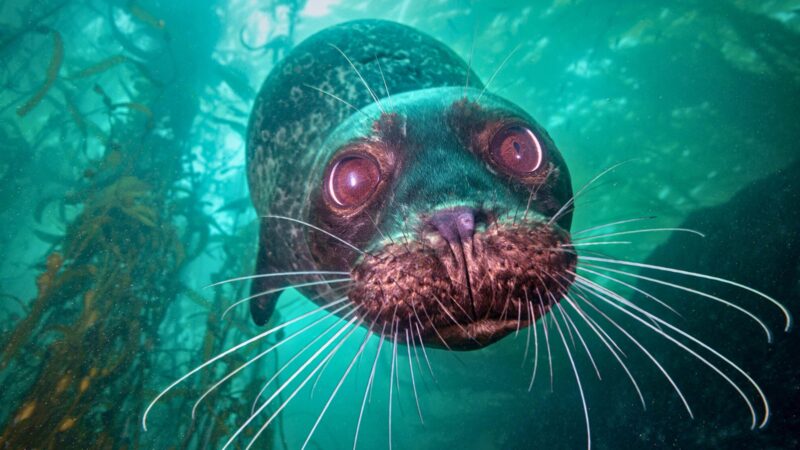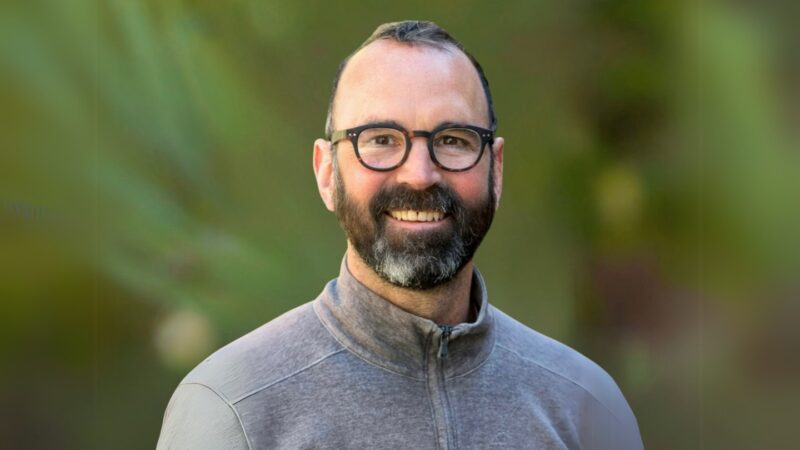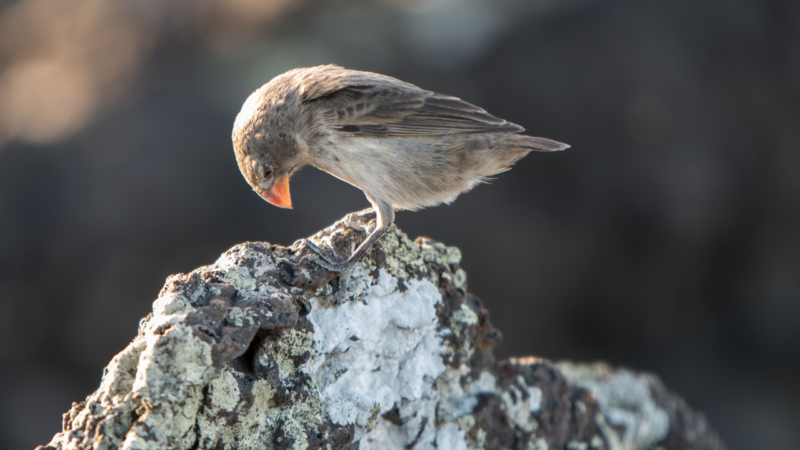
UCLA high school volunteer wins state science fair
He runs cross country. He’s on the speech and debate team. He struggles with Spanish class at times. His favorite band is The Killers. He’s also doing scientific research to…
Like many high schoolers, Tai Michaels has plenty of hobbies.
He runs cross country. He’s on the speech and debate team. He struggles with Spanish class at times. His favorite band is The Killers.
He’s also doing scientific research to protect Southern California from future wildfires, working hand-in-hand with postdoctoral scholars at UCLA’s La Kretz Center for Conservation Science.
After winning first place for ecology at the LA County Science Fair, Michaels went on to win top prize in environmental science at the state science fair. His research showed how chaparral vegetation is changed by repeated wildfires, and how that affects their risk of burning in the future.
“Chaparral is a very important ecosystem to understand,” said Michaels, a junior at North Hollywood High School. “When you hear about all the fires that happen in Southern California — including the Thomas Fire — all of those are chaparral fires. It’s near where I live. It has a big impact on our lives.”
The project began with pure curiosity. Two years ago, something peculiar caught Michaels’ eye while he was hiking in the Santa Monica Mountains, a place he calls his “second home.”
“I noticed very clear divides between areas with one kind of plant and other areas that had completely different plants. Initially, I wanted to look into that and the factors that play into it.”
He spent the summer after his freshman year hiking and learning to identify more than 600 plants with the help of The Jepson Manual, a resource on California’s diverse flora. With his school’s Science Olympiad club, he learned about invasive plant species — nonnative plants that can thrive and spread aggressively, disrupting ecosystems — and he read papers about the ecology of the region.
Realizing that there were gaps in his knowledge, he reached out to university experts including Gary Bucciarelli, director of research at Stunt Ranch, which is managed by UCLA’s La Kretz Center for Conservation Science. Bucciarelli referred him to postdoctoral researcher Alexandria Pivovaroff, now a visiting professor based out of Whittier College. He volunteered with her and Justin Valliere, a plant ecologist with the center, over the next several years.
“It was a really great help,” Michaels said. “They guided me on the project and gave me advice on how to make it accurate and control for all the variables.”
But Michaels put in the hardest work himself. He reached out to the United States Fire Administration to get maps of historical fires and data on factors such as “surface fire potential,” or how fast fire can spread in a given area. He identified areas of chaparral for his study after controlling for variables like elevation, precipitation and distance from the ocean.
Then he went into the field, surveying and comparing vegetation in two types of sample area: places that had been burned by frequent fires in intervals of 20 years or less, and places that had not. He conducted the research at the peak of the growing season, which meant spending 100 hours in protective clothing, trudging through thick vegetation in the summer heat to record different plant species and other characteristics.
In places where there had been frequent fires, he discovered a lower canopy (vegetation height), more open space and more invasive plants like grasses, which dry out more quickly and become fuel for fast-moving fires.
After crunching the data, he learned that frequently burned areas have an increased risk of fast-moving fires, though the likely intensity of the fires decreased.
Michael’s findings have implications for fire and land management. They call into question strategies like doing controlled burns to eliminate flammable fuels and allowing fires to burn until they reach developed areas. These strategies could backfire when it comes to chaparral that has burned in the previous 20 years, Michaels said.
“My research suggests using these areas as fuel breaks is not a good idea,” he said. “When that young fuel burns in short succession, it can convert the chaparral into invasive annual grasslands, which are more flammable and more susceptible to landslides and floods.”
UCLA’s Valliere said Michaels’ research was as strong as some that gets published in academic journals.
“He was able to execute a real science-driven study,” Valliere said. “It gives us more information about how fire intervals affect chaparral,” which is less understood than other California ecosystems.
The La Kretz Center’s work with Michaels is part of a larger outreach effort to local high schools to form mentorship relationships and conduct research at places like Stunt Ranch, a 310-acre ecological field station in the Santa Monica Mountains.
For Michaels, the science fair win stoked his growing passion for environmental science. As he prepares to apply for college, the competition was a crash course on how to conduct and communicate high-level research.
“It was a really great experience,” Michaels said. “It was really helpful being involved with La Kretz Center and getting to work on a bunch of projects.”
Published:


